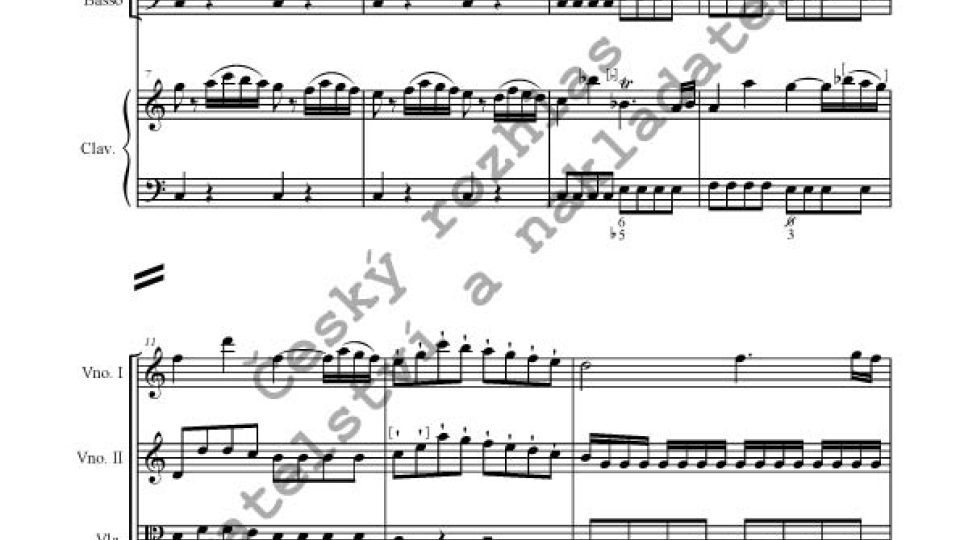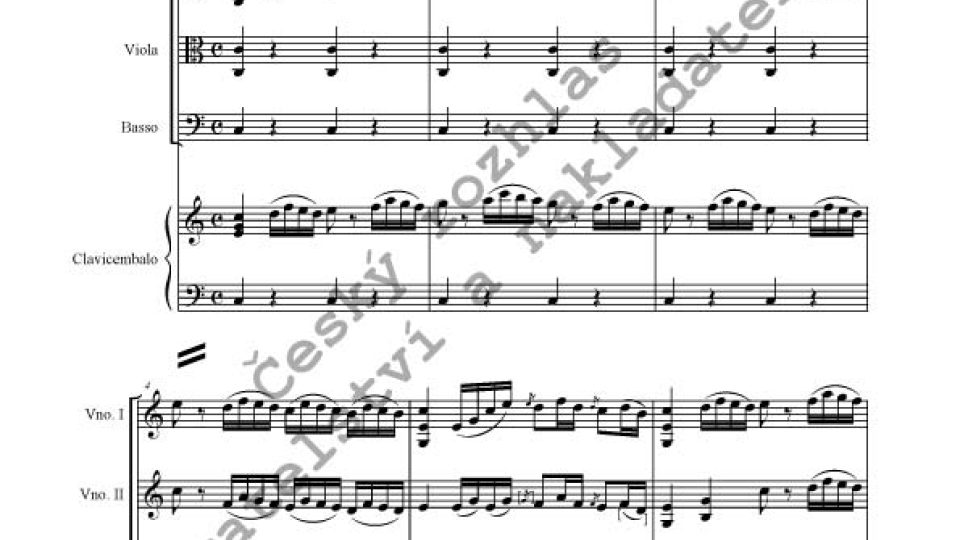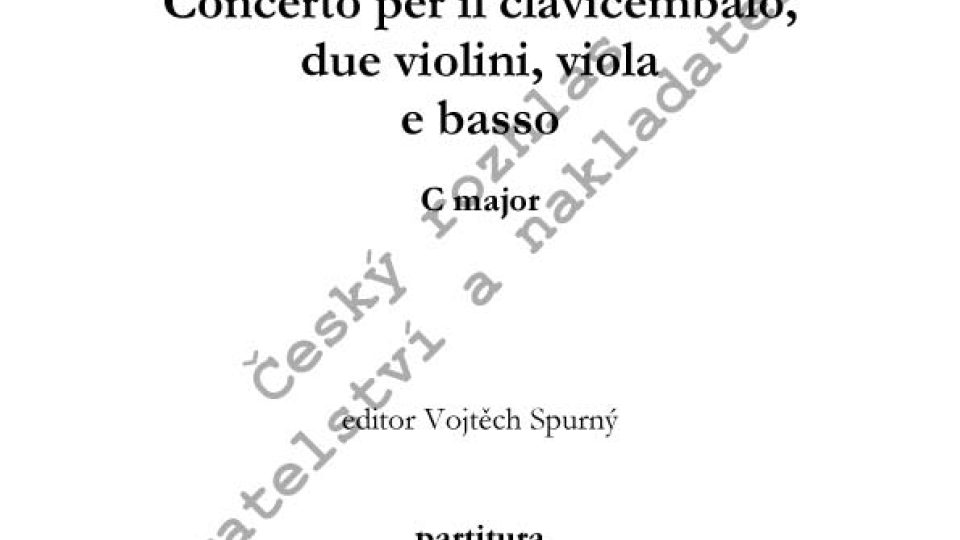Concerto per il clavicembalo, due violini, viola e basso in C - František Xaver Dušek (ed. Vojtěch Spurný)
Among those Czech composers of the 2nd half of the 18th century who stayed in the country, Dušek was undoubtedly one of the most important composers of instrumental music.
Dušek's work was produced in a period stretching from late Baroque to high Classicism, similarly as, for instance, the work of Haydn. Dušek's musical style grew from the safely mastered essentials of the old Vienna school (Wagenseil), reaching mature Classicist expression of the Haydnesque character. We can discern the influence of the gallant style of the Italian type in it (Hasse, Galuppi, Rutini), and the influence of the Berlin school (J. A. Benda, C. P. E. Bach), especially in the slow movements of some sonatas and concertos; Baroque elements appear now and then. The symphonies have three or four movements, the string quartets four movements. The sonata movements betray their Classicist structure (though smaller in proportion); some of the final movements are early examples of a well-developed rondo form. The slow movements are characterized by a gentle touch of melancholy and marked expressiveness. Dušek's melodic inspiration catches the ear also by the occasional use of elements of Czech tunes.
This applies fully to the Harpsichord Concerto in C major, too. Although it is not dated, its origin (on the basis of the fact that the concerto is listed in Breitkopf catalogue from 1774) can be placed into the 1760s or 1770s, that is the time when the harpsichord was still the dominant keyboard instrument, as both a concert and figured bass instrument. However, it is obvious that Dušek's concerto can be played on the hammer or tangent piano, too. The cast of the solo instrument is connected also with the choice of the accompanying ensemble. Because of the character of the piece and the number of extant parts, the concerto can be performed "a quattro", with 2 violins, a viola and a violoncello, or it is possible to choose a chamber string ensemble with a double-bass or a violone which doubles the part marked as "basso"; J. J. Quantz recommends, for example, 10 players (3-3-2-1-1). In line with the practice of Dušek's time, it is also possible to let the whole ensemble play only the orchestral tutti, and to accompany the solo episodes "a quattro" or with a reduced ensemble. This edition reproduces the text according to the original and without unnecessary alterations, although the manuscript is, in many details, as ambiguous and unclear as all other 18th- century source materials. Obvious writing errors in intonation and rhythm were corrected, and, where necessary, indications of dynamics and articulation were supplied according to analogous passages. Detailed information can be found in the critical commentary at the end of the score.
Other compositions by F. X. Dušek published in Czech Radio:
Concertino per il clavicembalo, due violini, viola e basso in G
Concertino per il clavicembalo, violino, viola e basso in G
Concerto per il clavicembalo, due corni, due violini, viola e basso in D
Concerto per il clavicembalo, due corni, due violini, viola e basso in Es
instrumentationclav, vnoI, vnoII, vla, bassodescriptionscore, partspubl.NoR 068price (score)300,- CZKprice add. single part:20,- CZK




